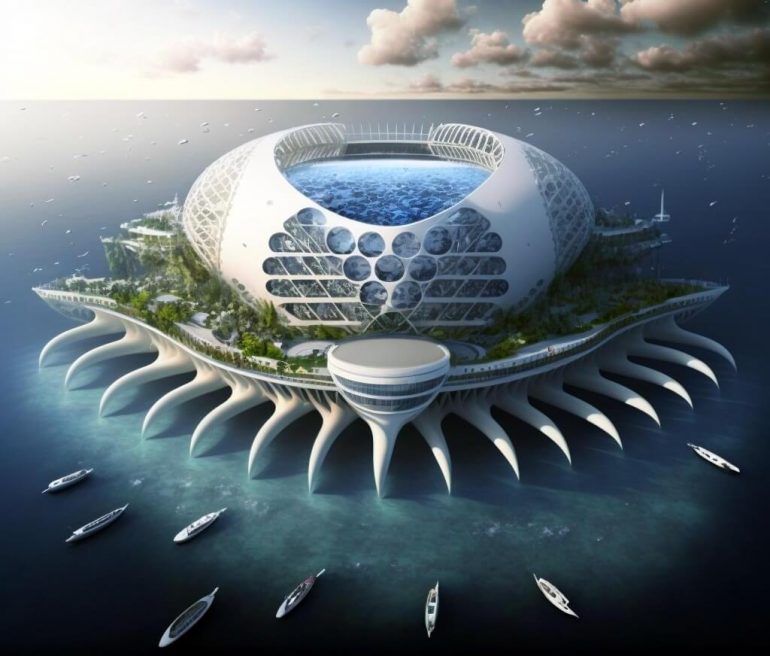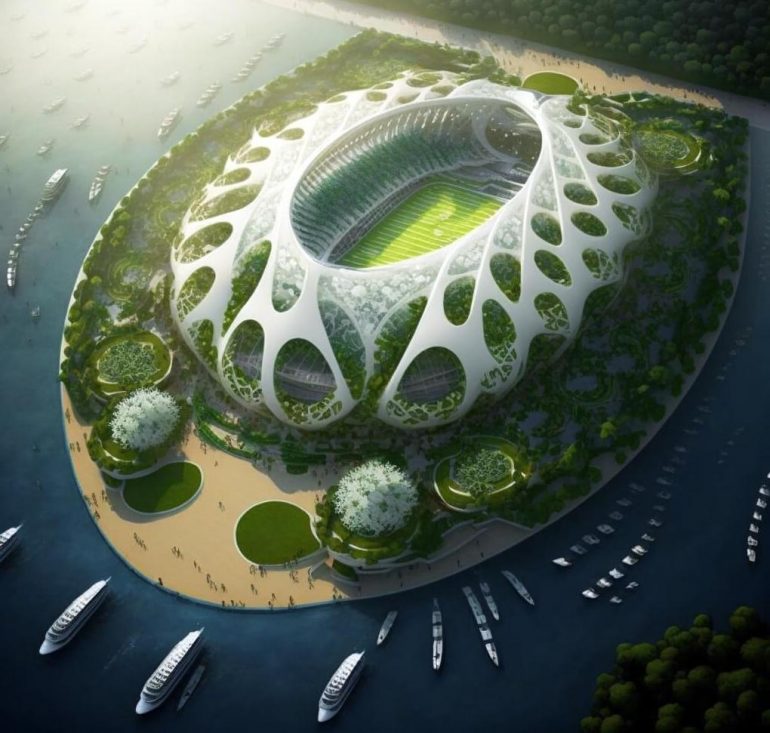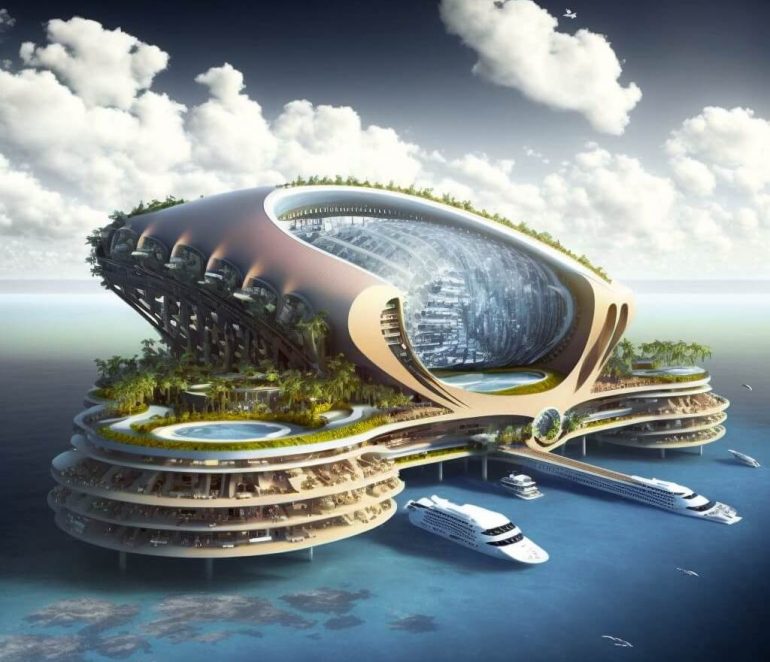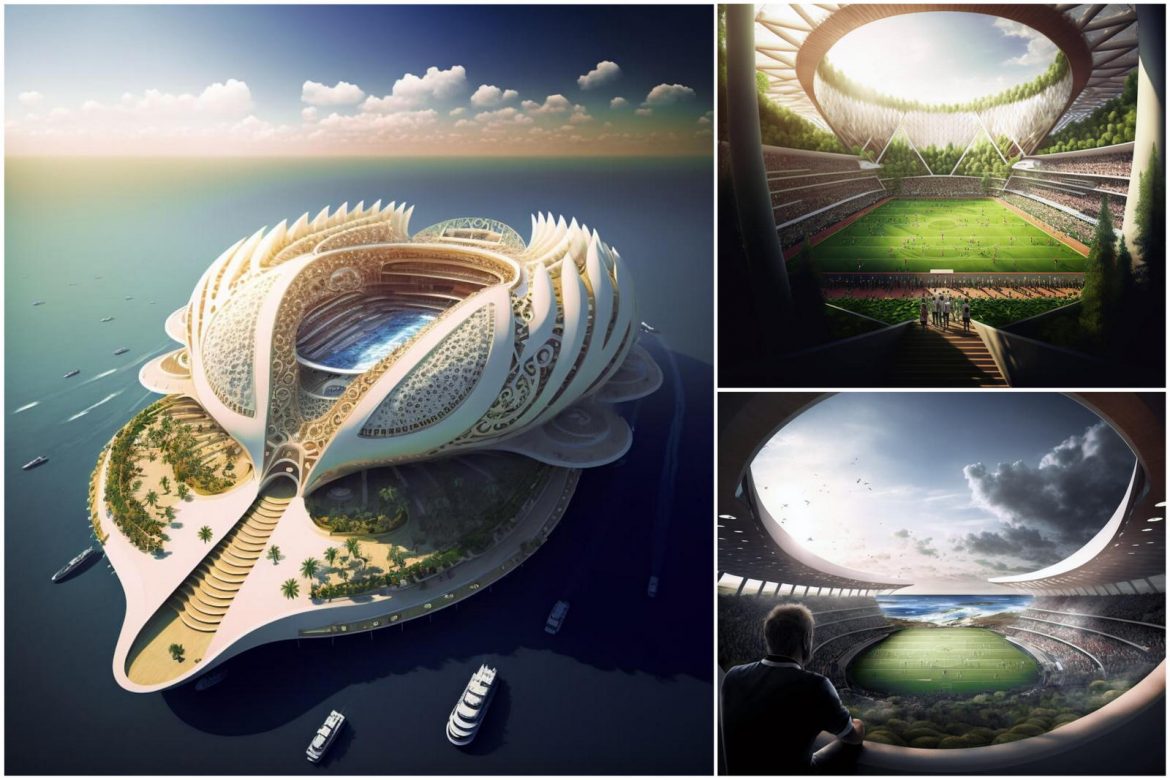It is beginning to look like the words stadiums, and simple won’t feature in the same sentence in the future. Those who think Architect Pouria Babakhani’s OTT iterations of future stadiums were insane, Vincent Callebaut Architectures are totally hitting the stadium out of the, well, stadium. Introducing, Oceaniums, futuristic floating stadiums that will disrupt regular thinking, blow your mind, and open a new world to sports fans while redefining international sports events. Designed keeping the 2026 FIFA World cup in mind, with Oceaniums, fans will stay put, and the nomadic stadiums will travel to the fans.

Call them half-ship, half-stadium, as the imaginative French architectural firm proposes to build the floating stadiums not on land but at sea. The low-carbon community hubs will be constructed using recycled materials such as solid wood, recycled aluminum, green algae, and plastic waste from the 7th continent. It will also function with the same principle using only renewable energy sources, such as solar radiation, wind power, and ocean currents to navigate.

The disruptive design team aims to stir up the world of sports offering a new vision for sporting and cultural practices and bidding adieu to obsolete stadiums with refreshing, remarkable, novel, sustainable, and ecological traveling stadiums.

The company stated, ‘Architecturally, the organic geometries of these floating stadiums are inspired by biomorphism, their optimized structures by bionics and their ecosystem life cycle by biomimicry. Resembling coral reefs in the process of calcification, skeletons of cetaceans filtering seawater, and bioluminescent organisms, they are havens of biodiversity dedicated to the flourishing of ocean flora and fauna.’

They added, ‘These Oceaniums, true stadiums of the oceans, would be built using only biosourced and recycled materials such as solid wood, recycled aluminum, green algae and plastic waste from the 7th continent concentrated in the five oceanic gyres. This plastic waste would become new construction materials feeding 3D printers connected to human-orchestrated artificial intelligence processors. The development of a multitude of algorithms and especially the predictive learning offered by AI and 3D printing make it an essential tool for limiting human risks on these future augmented construction sites.’

Stadiums are undergoing a massive overhaul-
Sporting arenas created using AI may seem like a design project that will never take shape or a distant dream at best. However, countries like China and Qatar have already done that. For the 2022 FIFA World cup, the gulf nation built a stadium out of shipping containers which was later disassembled after the games. China’s Quzhou stadium, on the other hand, is touted to become the world’s largest earth-sheltered complex.

Still, the stadiums won’t even come close to vision of Vincent Callebaut Architectures if it becomes a reality. There’s no stopping the ball from landing in its court once they manage their well-executed ambition.









